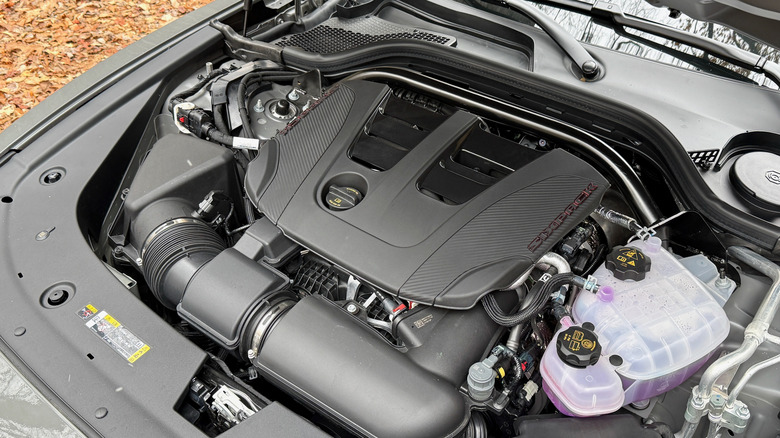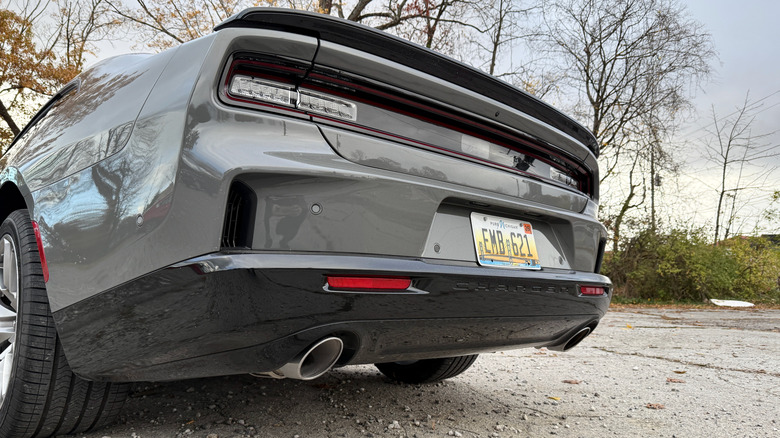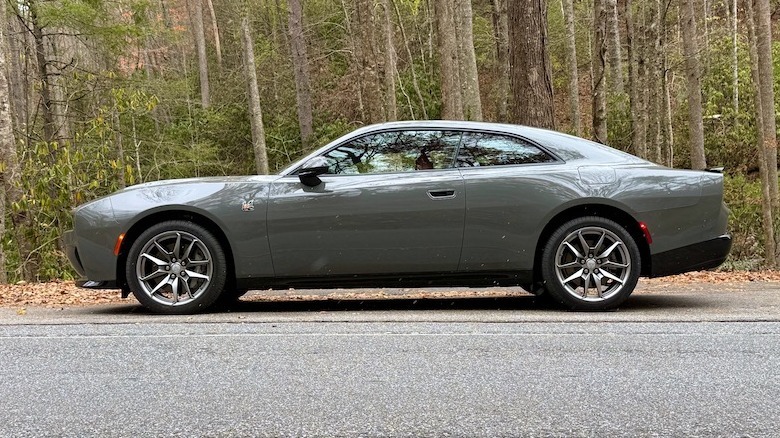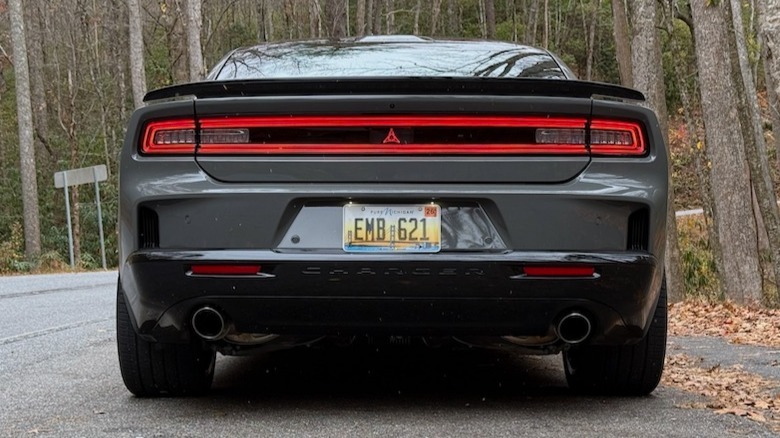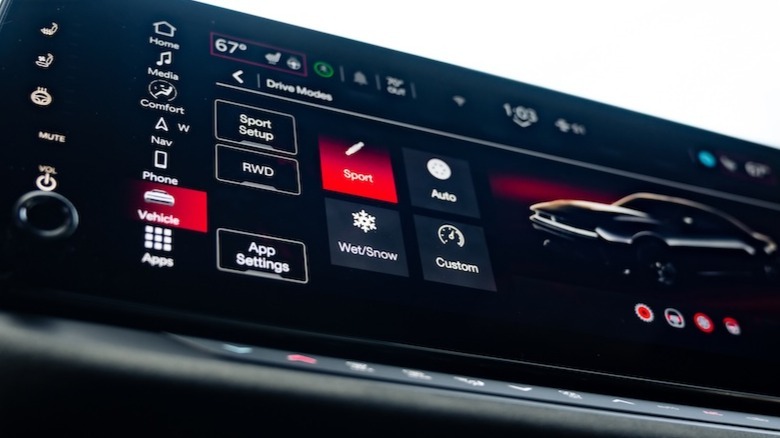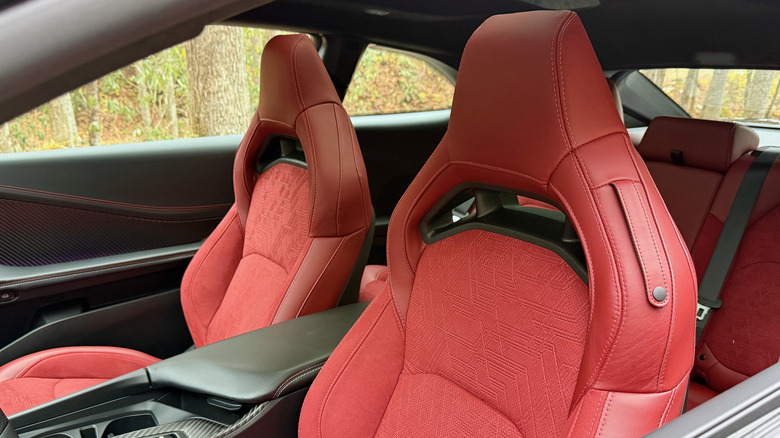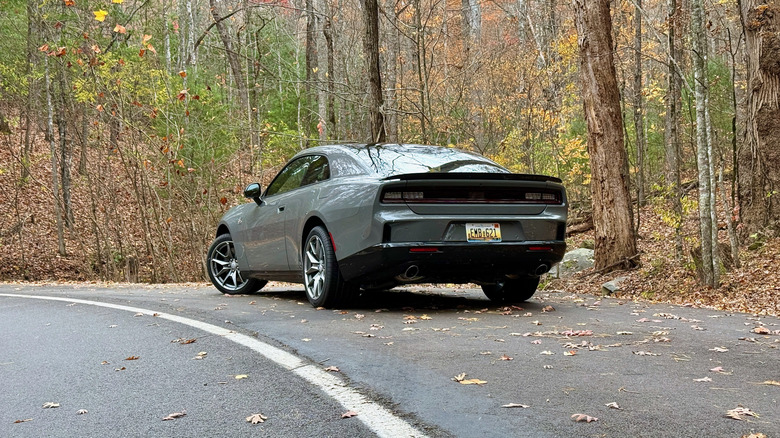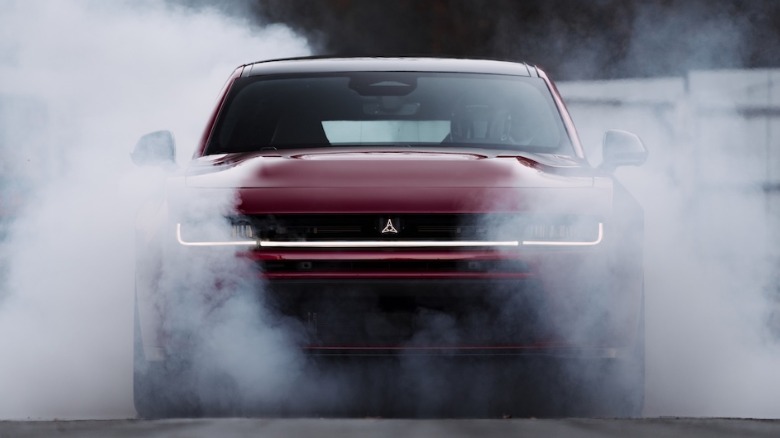Sorry, Hemi Fans: Dodge's 2026 Charger SIXPACK Does Just Fine With An Inline-Six
Dodge had a really tough assignment with the new Charger. They needed to replace two beloved muscle cars, the Challenger and the Charger. Simultaneously, they needed to eliminate one of the things that made both of those cars so great: the powerful and evocative V8 engines under the hood.
To pile on top of this tall task, they also needed to make the Charger a dual-platform vehicle with two different body styles. So, the newest Charger had to come out as an EV, and with a non-V8 engine. Oh, and it had to be both a two-door AND four-door vehicle.
We've already covered the launch of the electric-only Charger Daytona, and it turned out to be pretty competent on track. Now, the only task that's left is to make sure the gasoline-powered version is just as fun and capable, but while burning some fossilized dinosaurs. To prove that it's still a thrilling muscle car, Dodge invited me out to hallowed ground, one of the Mecca's of North American automotive enthusiasm: The Tail of the Dragon.
Power updates in the form of an inline-six
Before I talk about the beastly road that is the Tail of the Dragon and how the Dodge performed there, let's talk about power. The standard version of the Charger SIXPACK uses a twin-turbocharged 3.0-liter inline six-cylinder engine (Dodge calls it the S.O. for standard output). It produces 420 horsepower and 468 lb-ft of torque. That's a lot more power than the old 5.7-liter V8 (370 hp) and almost enough to match the old 6.4-liter V8 (485 hp).
The High Output (H.O.) version of the SIXPACK goes even further. It uses bigger turbochargers to make 550 hp and 531 lb-ft, which Dodge claims is enough power to rocket the all-wheel-drive sedan from zero to 60 mph in 3.9 seconds.
Dodge even had a drag strip set up to show us the launch procedure and let us give it a go, but with flurries of snow on and off throughout the day (yep, that's snow you see on the Charger's front bumper in the first photo), the drag strip had to be closed. Thankfully, there were plenty of wide-open stretches of Tennessee back roads where we were able to stretch the Charger's legs a bit.
Its best V8 impression
The H.O. version of the Charger that I drove felt properly powerful and it made some satisfying noises, but it certainly lacked some of the character that defined the old V8s. At idle is where the inline-six cylinder felt the least refined, with more of a raspy noise than a deep rumble. The noises and character become much more rewarding as the RPMs rose, however.
Dig in from a launch and the all-wheel-drive system attacks the ground at all four corners, more closely mimicking the all-electric Charger than the previous-generation V8 models. It didn't take long for the twin 54mm Garrett GT2054 turbochargers to spool up to their peak of 30 psi and rocket the Challenger forward. On the way up through the powerband, the exhaust notes became clearer and more satisfying.
Upshifts from the eight-speed automatic transmission were quick and seamless with little drama on open road. Leaving the transmission in third gear meant there was plenty of torque around tight corners. Even if it didn't have the same guttural sounds as the old V8 options, the inline-six was an entertaining engine with a lot to offer. It never bogged down, felt underpowered, or unsuited to the task of moving such a big vehicle.
Too wide for The Tail of the Dragon
After a few back-country pulls, it was time to hit the twisties. That's where the Tail of the Dragon came into play. The Tail of the Dragon is an 11 mile section of US Highway 129 with 318 curves and no intersecting roads to stop your progress. It's referred to as the greatest driving road in America. I've visited it many times, in many different cars and even on a few motorcycles. While I'm not sure I agree with the statement that it's America's best road, I do know that it's one with lots of satisfying twists and turns.
The Dragon's lanes are tight, with big drop-offs on one side and hilly, inhospitable terrain on the other. Frankly, the Charger is too wide for a road like the Dragon. If the Charger were just 3mm wider, indeed, it would be legally required to have additional front indicator lights, much like the lights you see on massive trucks like the Ram TRX.
This is a bragging point for Dodge, as their engineers pointed out that every Charger is now a wide body, but this makes it tough to navigate tight roads. Spotting the corners from inside the cabin was difficult, so driving at a reduced pace was the best option. Instead of having an enthusiastic back-road drive, I spent my time worrying about clipping stray rocks and making sure to keep within the confines of my own lane.
It can still handle and change direction quickly
The Charger felt much more at home on some of the wider sections that wind through the mountains of North Carolina and Tennessee. Instead of managing the weight so I wouldn't overcook a double-yellow, I could pay attention to the steering and handling dynamics. It did reveal, however, that regardless of drive mode, steering feedback was numb and steering weight was a bit too light. As somewhat of a trade-off, the car responded to inputs quickly. And after a few hours in the mountains, Dodge sent us to a nearby parking lot where we could get the Charger sideways.
Getting the Charger out of all-wheel-drive mode and into rear-drive-only mode took just a few touchscreen commands, and confirmation that traction control was disengaged. From there, it was all too easy to get the Charger sideways, converting the rear tires to smoke with a stab of the throttle. I ended up backwards or on top of cones a few times, but with additional coaching and a bit lighter foot, things went much better on my second attempt.
The Charger's weight pulled it out of line a few times (the two-door version weighs 4,816 lbs), but it was a easy task to learn the car's steering inputs and its drifting dynamics. And since the Scat Pack versions of the Charger come with a day at Radford Racing School, most buyers should be able to experience the same kind of entertaining driving experience.
More comfort than you might expect
One of the things I've enjoyed thoroughly when testing various Charger models in the past has been their high levels of comfort. While it might not be a Dragon-conquering, ultra-agile sports car, the Charger still holds its own as a proper long distance cruiser. It has a forgiving suspension that soaks up most small and medium sized bumps, and the cabin is pretty isolated from most exterior noises.
After over 300 miles in the seat of the same Charger, I didn't have any hot spots for discomfort of any kind. The front seats are relatively well-padded, even if they aren't bolstered sufficiently for committed duty at a racetrack or drifting course. I slid around in the driver's seat quite a bit during on-road driving, and during our drifting exercise.
Being as wide and long as it is (79.8 inches wide and 206.6 inches long), even the two-door version of the latest Charger is plenty big enough for adults in all four seating positions. Naturally, it takes a bit of ducking and climbing for adults to get into the back seat, but once seated there's plenty of headroom and legroom. Honestly, the space in the rear was a bit surprising, reminding me of the early American muscle cars I had ridden in during my childhood. As far as muscle cars go, the Charger felt pretty plush.
Plenty of tech and interior goodies
Like the latest Charger Daytona EV, the gasoline-powered models have a fresh interior with big screens, lots of tech, and a number of modern features. Both the optional 16-inch digital gauge cluster and the standard 12.3-inch center touchscreen have high-contrast displays, impressive resolution, and quick responses to inputs. An optional 18-speaker Alpine stereo, 64-color interior ambient light adjustment, and a crisp head-up display all make for what feels like an upscale experience.
The panel of climate control buttons under the center touchscreen seems nice to have for those of us who prefer not to use drop-down menus for cabin temperature, but in reality, it's a drawback that detracts from the interior experience. Instead of separate buttons, all the climate controls are one large button that all depresses when you put your finger on just one of the controls. It feels cheap, and poorly executed. In most scenarios, I wouldn't prefer touchscreen controls, but in this situation I might make an exception for such a clunky button interface.
2026 Dodge Charger SIXPACK verdict
The latest Dodge Charger doesn't strike the same chords as the previous-generation model, nor does it do the same tricks as the surviving V8 Ford Mustangs, but that doesn't mean the Charger plays a bad tune. The new Charger SIXPACK is still properly powerful with an appropriate number of modern features, and a quiet cabin that will make road trips easy. Whether you get it with two or four doors, the Charger offers lots of space on the inside.
More than practical, it's playful too. It has a line-lock feature for burnouts, a quick and easy way to switch from all-wheel drive to rear-wheel drive, and it'll happily do donuts in a parking lot until you shred the tires down to nothing.
The standard-output version of the 2026 Charger in its R/T trim, with two doors, has an MSRP of $51,990 (including $1,995 destination fee). The Scat Pack, with the 550-horsepower version of the six-cylinder, costs $5,000 more with a base price of $56,990. Another $5k will get you the 670-horsepower Daytona Scat Pack EV ($61,990), and all of those two-door models can be upgraded to the four-door version for an extra $2,000. There are some drawbacks and flaws with the new Charger, but depending on which version of the you're interested in, you can get a lot of power for your money — Dodge has made sure of that. And at their core, isn't that what muscle cars are all about?


